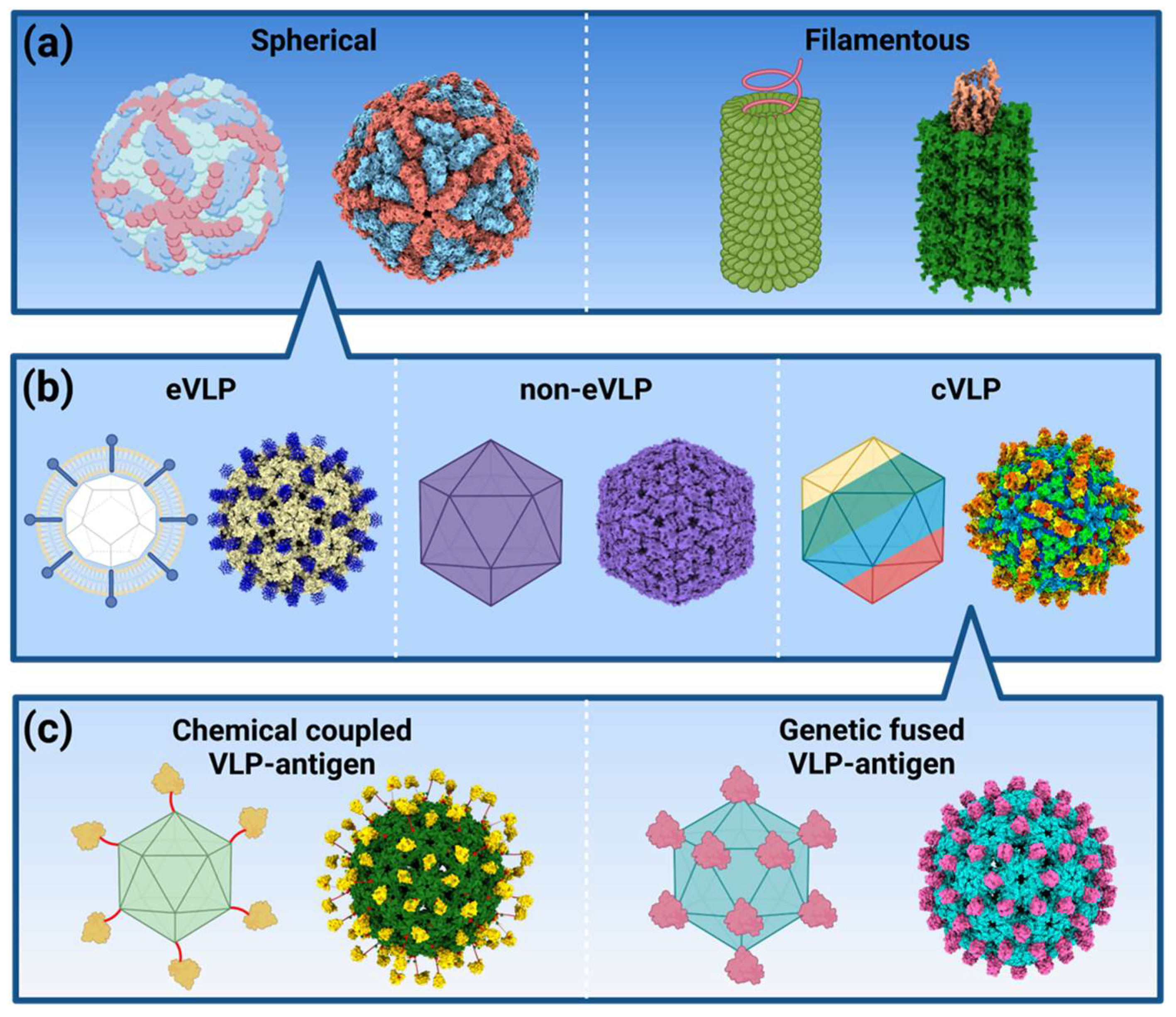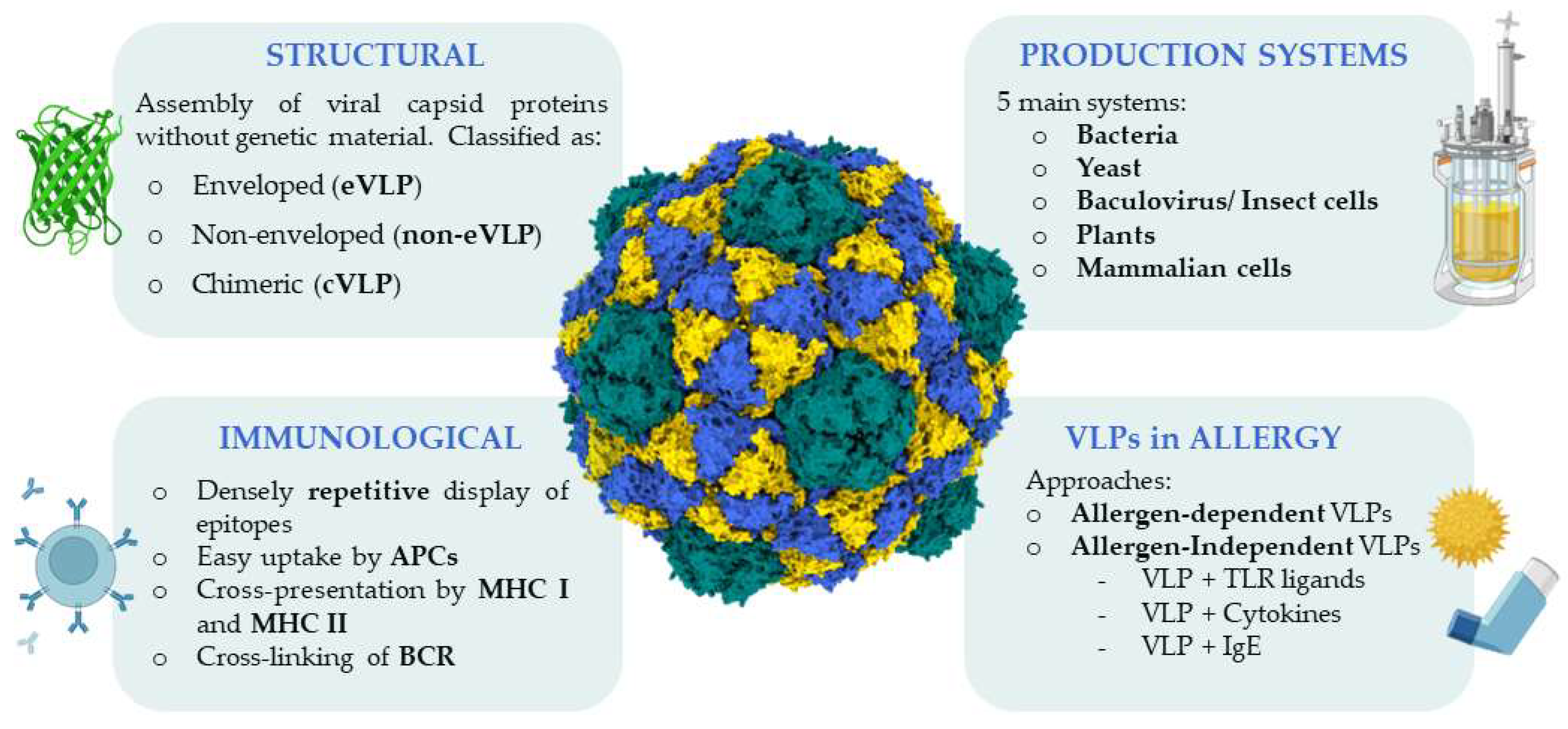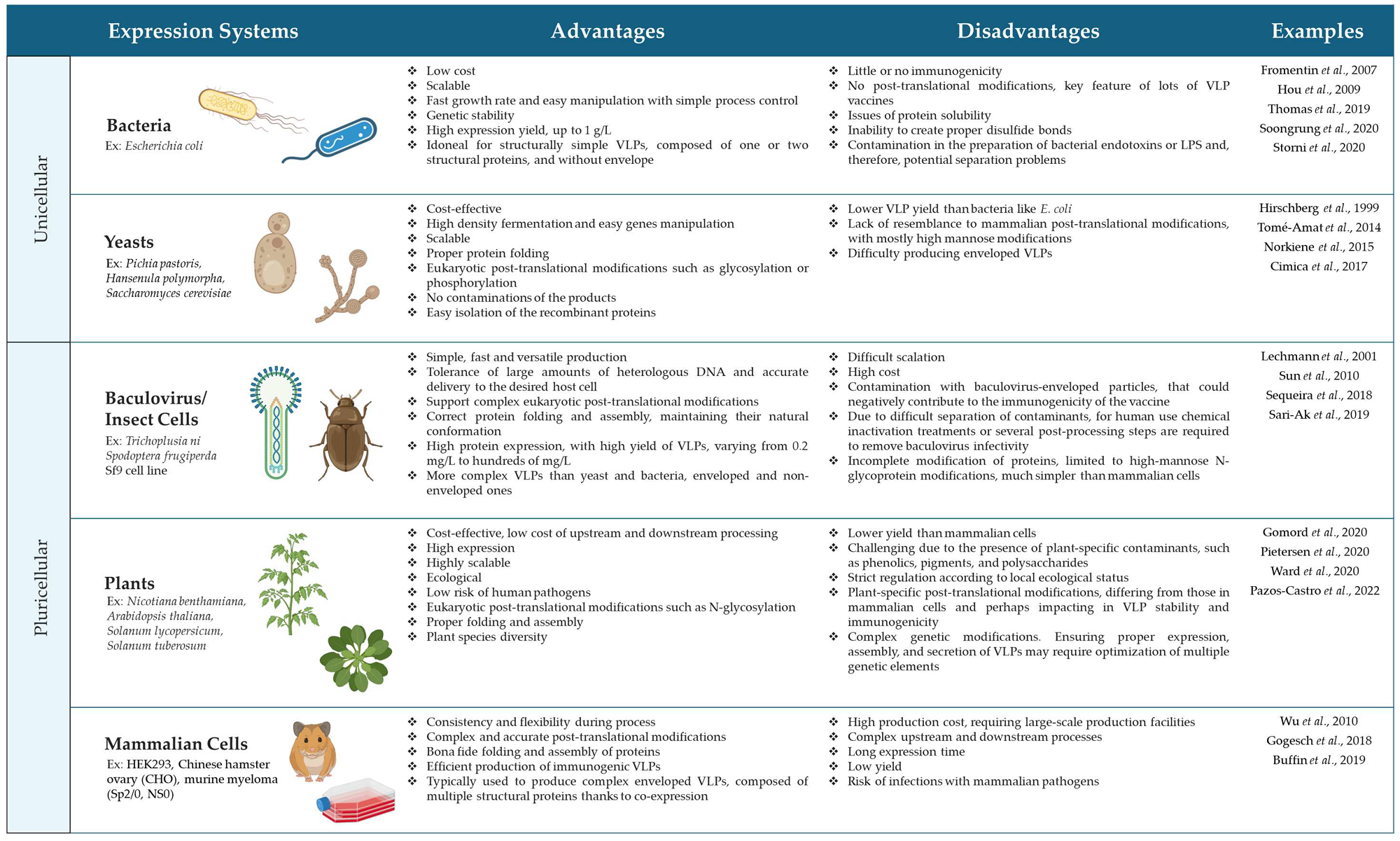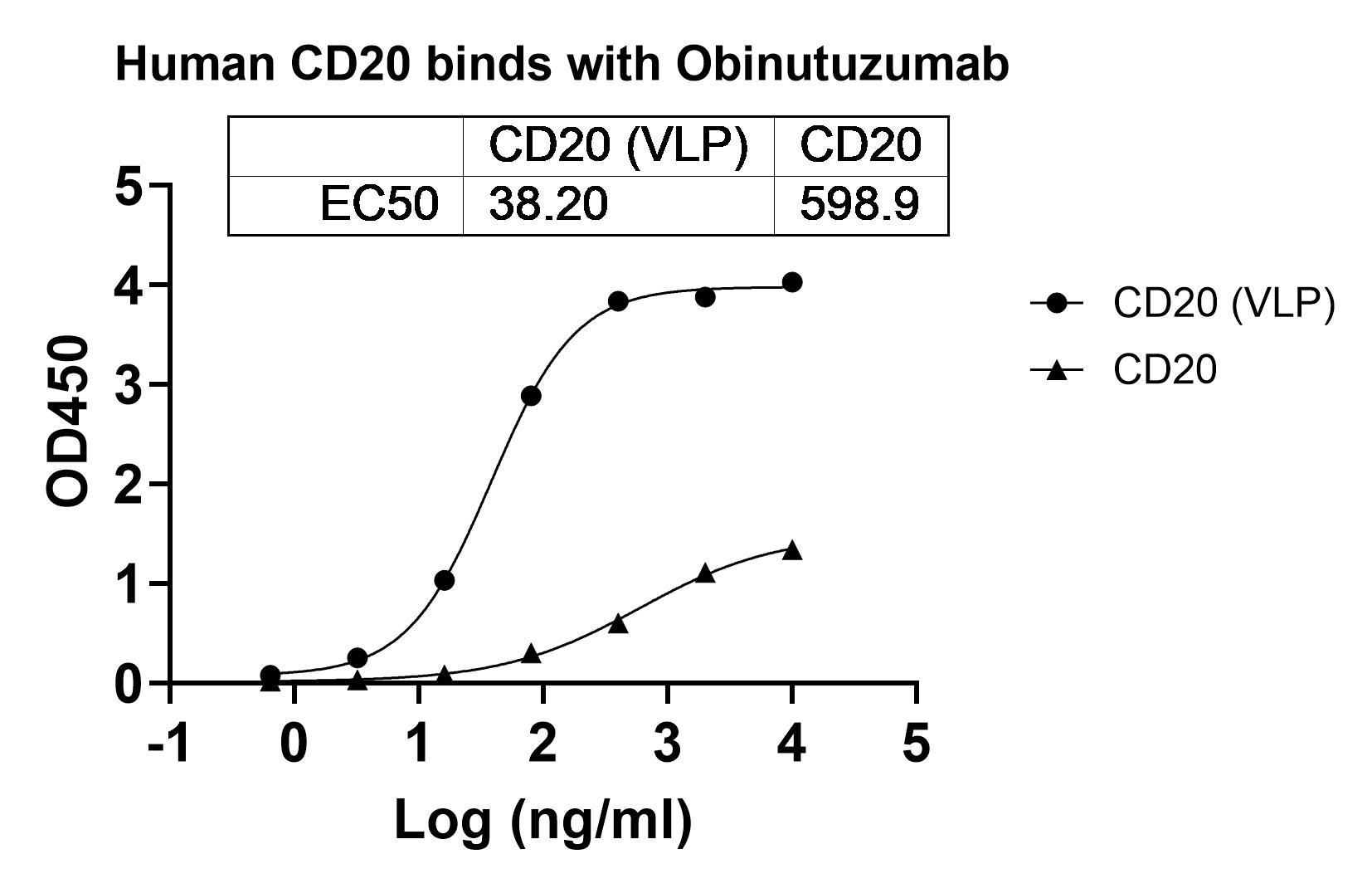Virus-like particles (VLPs) are nano-sized particles formed by the self-assembly of viral structural proteins. They lack the viral genetic material, are non-infectious, and exhibit an excellent safety profile. VLPs mimic the native conformation and repetitive surface antigen array of viruses, enabling potent activation of both B cells and T cells. Consequently, they are widely used in vaccine development and antigen presentation. Researchers can produce VLPs in the laboratory by expressing recombinant viral proteins in various expression systems, including prokaryotic cells, yeast, insect cell lines, plant cells, and mammalian cell lines.
Classification of VLPs
VLPs can be categorized into different types based on their structural characteristics and origin. Non-enveloped VLPs (non-eVLPs) are typically composed of one or multiple structural proteins (such as L1 protein or core antigens) that assemble into regular icosahedral or helical symmetric structures. An example includes the VLPs used in the human papillomavirus (HPV) vaccine. Enveloped VLPs (eVLP) are more complex; during their assembly, they incorporate the host cell's lipid bilayer and display key exogenous transmembrane proteins, such as the Spike (S) protein VLPs used in SARS-CoV-2 vaccines. Additionally, there are VLPs derived from bacterial, plant, or insect viruses, such as Cowpea mosaic virus (CPMV) and Norovirus (NoV) VLPs, highlighting the diversity and broad applicability of VLP technology platforms.

Figure 1. Schematic and modeled structural classification of VLPs(J Nanobiotechnology. 2021 Feb 25;19:59.)
Production System of VLPs
VLP production relies on various recombinant protein expression systems, including E. coli, yeast, insect cells (baculovirus system), mammalian cells (e.g., HEK293, CHO), plant cells, and even cell-free expression systems. Each system offers distinct advantages.

Figure 2. Structural classification, different production systems, the immune mechanisms associated, and the application of VLPs in the treatment of allergies.(Int. J. Mol. Sci. 2024, 25(13), 7429)
Mammalian cell expression systems (e.g., HEK293, CHO cells) perform the most complex post-translational modifications, such as precise glycosylation, making them the preferred platform for producing complex enveloped VLPs. The insect cell-baculovirus expression system is renowned for its high throughput, high yield, and robust capacity for complex protein folding and assembly, serving as an industrial workhorse for large-scale production of non-enveloped and some enveloped VLPs. For structurally simpler VLPs, yeast and plant cell expression systems offer cost-effective and easily scalable alternatives. While prokaryotic expression systems (e.g., E. coli) are the fastest and most economical, they are generally suitable only for expressing single structural protein units capable of spontaneous VLP assembly.

Figure 3. Advantages and disadvantages of different expression systems for the recombinant production of VLPs(Int. J. Mol. Sci. 2024, 25(13), 7429)
The VLP platform offers multiple advantages for recombinant protein expression. When a target antigen is displayed as part of the VLP capsid, its immunogenicity is significantly enhanced, enabling even low-abundance or weakly immunogenic proteins to induce strong antibody responses. Secondly, VLPs lack the viral genome, ensuring high safety suitable for large-scale production and clinical application. Furthermore, eukaryotic expression systems like mammalian cells provide correct protein folding, disulfide bond formation, glycosylation, and other PTMs, ensuring the functional activity of the recombinant protein.
It is particularly noteworthy that VLP technology offers unparalleled advantages for expressing transmembrane proteins. This platform enables the presentation of full-length membrane proteins in their native conformation on the particle surface, generating transmembrane proteins ideal for immunization and antibody screening. Transmembrane proteins, such as GPCRs, ion channels, and viral envelope proteins, are naturally embedded within the lipid bilayer, and their correct structure and function critically depend on this lipid environment. Traditional expression methods often lead to denaturation, aggregation, or loss of function for these proteins. Enveloped VLPs elegantly overcome this challenge: by co-expressing the viral core structural protein and the target transmembrane protein in production cells, the target protein is naturally incorporated into the lipid envelope of the VLP. This in-situ embedding approach maximally preserves the native conformation, correct membrane orientation, complex post-translational modifications, and intrinsic biological function of the transmembrane protein, providing a high-quality tool for structure-based vaccine design, drug screening, and functional studies.
As a provider specializing in cutting-edge biotechnology services, AntibodySystem offers a wide range of recombinant proteins based on VLP technology, catering to various experimental needs such as vaccine development, antibody screening, and functional validation.
Validation Data

Immobilized CD20 (VLP)(CAT#AHC90705) can bind Obinutuzumab. The EC50 of CD20 (VLP) is 38.2 ng/ml.
|
Validation data related products |
|
|
Catalog |
Product Name |
|
AHC90705 |
Recombinant Human CD20/MS4A1 Protein, C-His-flag (VLP) (Active) |
|
AHC90703 |
Recombinant Human CD20/MS4A1 Protein, C-His-Flag (Active) |
|
DHC90704 |
Research Grade Obinutuzumab |
AntibodySystem Other VLP related product catalog:
|
Catalog |
Product Name |
|
AWB65402 |
Recombinant Cynomolgus monkey SLC34A2/NaPi2b Protein, C-Flag (Fluorescent VLP) |
|
AHE32802 |
Recombinant Human ADCYAP1R1 Protein, C-His-Flag (VLP) (Active) |
|
AHE32805 |
Recombinant Human ADCYAP1R1 Protein, C-His-Flag (VLP) (Active) |
|
AHH31003 |
Recombinant Human CALCRL & RAMP1 Heterodimer, C-Flag & C-His (VLP) (Active) |
|
AHA68401 |
Recombinant Human CD133/PROM1 Protein, C-Flag (VLP) (Active) |
|
AHC90704 |
Recombinant Human CD20/MS4A1 Protein, C-His-flag (Fluorescent VLP) (Active) |
|
AHC90705 |
Recombinant Human CD20/MS4A1 Protein, C-His-flag (VLP) (Active) |
|
AHJ94804 |
Recombinant Human CD350/FZD10 Protein, C-Flag (VLP) (Active) |
|
YHF19807 |
Recombinant Human CLDN18/Claudin-18 Protein, Tag free (VLP) (Active) |
|
AHA19601 |
Recombinant Human CLDN4/Claudin-4 Protein, N-His & C-Flag (VLP) (Active) |
|
AHF19201 |
Recombinant Human CLDN6/Claudin-6 Protein, C-Flag (VLP) (Active) |
|
AHB67401 |
Recombinant Human CLDN9 Protein, C-Flag (Fluorescent VLP) (Active) |
|
AHD46201 |
Recombinant Human CNR1/CB1 Protein, C-Flag (VLP) (Active) |
|
AHD65901 |
Recombinant Human EDNRA/ETA/ETRA Protein, N-Flag-His (VLP) (Active) |
|
AHD63002 |
Recombinant Human EDNRB/ETRB Protein, C-Flag (VLP) (Active) |
|
AHE58704 |
Recombinant Human GIPR/GIP-R Protein, C-Flag (VLP) (Active) |
|
AHK07701 |
Recombinant Human GPRC5D Protein, C-Flag (Fluorescent VLP) (Active) |
|
AHB65403 |
Recombinant Human SLC34A2/NaPi2b Protein, C-His-Flag (VLP) (Active) |
|
AMJ94802 |
Recombinant Mouse FZD10 Protein, C-Flag (VLP) (Active) |
|
AMB65402 |
Recombinant Mouse SLC34A2/NaPi2b Protein, C-Flag (Active, Fluorescent VLP) |
References
1. Nooraei S, Bahrulolum H, Hoseini ZS, et al. Virus-like particles: preparation, immunogenicity and their roles as nanovaccines and drug nanocarriers. Journal of Nanobiotechnology. 2021;19(1).
2. Berreiros-Hortala, H.; Vilchez-Pinto, G.; Diaz-Perales, A.; Garrido-Arandia, M.; Tome-Amat, J. Virus-like Particles as Vaccines for Allergen-Specific Therapy: An Overview of Current Developments. International Journal of Molecular Sciences 2024, 25 (13), 7429–7429.
